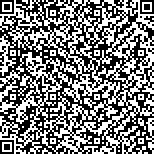王国胜,赵蕾,关晨霞,等.膈肌超声对获得性脑损伤气管切开患者拔管结局的预测价值分析[J].中华物理医学与康复杂志,2025,47(3):249-254
扫码阅读全文

|
| 膈肌超声对获得性脑损伤气管切开患者拔管结局的预测价值分析 |
|
| |
| DOI:10.3760/cma.j.cn421666-20240425-00311 |
| 中文关键词: 获得性脑损伤 气管切开 膈肌超声 预测模型 |
| 英文关键词: Brain injury Diaphragm ultrasound Tracheotomy Prediction models |
| 基金项目:河南省重大科技专项(221100310200) |
|
| 摘要点击次数: 1923 |
| 全文下载次数: 1845 |
| 中文摘要: |
| 目的 探讨膈肌超声对获得性脑损伤气管切开患者拔管结局的预测价值。 方法 采用回顾性分析方法,选取2022年1月至2022年10月期间在郑州大学第五附属医院康复医学科住院治疗的51例获得性脑损伤气管切开患者作为观察对象,根据患者住院期间是否成功拔除气切套管将其分为拔管组和未拔管组。对2组患者的膈肌超声检查结果进行单因素分析,将单因素分析中具有统计学意义的自变量纳入多因素logistic回归分析,从而获得影响获得性脑损伤气管切开患者拔管结局的重要膈肌超声指标,并应用R软件将上述膈肌指标构建成列线图模型,采用受试者工作特征(ROC)曲线分析该列线图模型对获得性脑损伤气管切开患者拔管结局的预测价值。 结果 单因素分析结果显示,拔管组、未拔管组患者在膈肌移动度、膈肌增厚分数、膈肌位移-时间指数方面组间差异均具有统计学意义(P<0.05);多因素logistic回归分析及Nomogram分析显示,膈肌移动度、膈肌增厚分数、膈肌位移-时间指数均是影响获得性脑损伤气管切开患者拔管结局的独立因素(P<0.05);通过分析ROC曲线发现,膈肌移动度、膈肌增厚分数、膈肌位移-时间指数预测气管切开患者拔管结局的曲线下面积(AUC)分别为0.661、0.703、0.658,而由上述指标联合构建的列线图模型的AUC为0.811,表明其预测效能明显优于膈肌移动度、膈肌增厚分数、膈肌位移-时间指数单独预测。 结论 膈肌移动度、膈肌增厚分数、膈肌位移-时间指数均是影响获得性脑损伤气管切开患者拔管结局的重要因素,由上述指标联合构建的列线图模型对患者拔管结局的预测效能明显优于各指标单独预测,有助于指导临床拔管,进一步提高拔管成功率,减少不良反应发生。 |
| 英文摘要: |
| Objective To evaluate the effectiveness of diaphragm ultrasound in predicting the success of extubation from tracheotomy in patients with acquired brain injury. Methods A retrospective analysis was conducted on 51 brain-injured patients. They were divided into an extubation failure group and an extubation success group. The results of ultrasound examination of the diaphragm in the 2 groups were analyzed by univariate analysis, and the independent variables with significance were further subjected to multivariate logistic regression analysis. R software was applied to build the diaphragm indicators showing significant predictive power into a histogram model. The predictive value of this nomogram model was assessed using the receiver operating characteristics (ROC) curve. Results The univariate analysis revealed significant differences between the two groups in terms of diaphragm excursion, diaphragm thickening fraction and diaphragm excursion-time index. The multivariate logistic regression analysis and the nomogram showed that those three variables are independent influencing factors predicting the success of decannulation. The areas under the ROC curves confirmed that finding. Conclusions Diaphragm excursion, diaphragm thickening fraction and the diaphragm excursion-time index are useful independent predictors of the success of decannulation among brain injury patients. |
|
查看全文
查看/发表评论 下载PDF阅读器 |
| 关闭 |